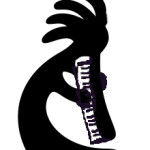Quizz Question: What is Wrong with This Picture?
- This topic has 4 replies, 3 voices, and was last updated 8 years, 3 months ago by
 Alan Brinton.
Alan Brinton.
-
AuthorPosts
-
January 9, 2016 at 8:30 pm #6709
 LowboyParticipant
LowboyParticipantHi,
So today I took apart two old, made-in-Germany, beat up, bad sounding Hohner melodicas: a Cassotto 26 and a Piano 26. I took them apart to wash them and made a discovery that I found quite interesting. Let’s see who can figure out what is wrong with the picture (melodicas). This was an incredible coincidence as well.
The top photo shows the front of both the Piano 26 and the Cassotto 26. Then I flipped them over and photographed the back side without changing the position of the melodicas (bottom photo). What is wrong here? Can you figure it out HohnerHeads?
Lowboy
Top

Bottom
 January 12, 2016 at 12:08 am #6719
January 12, 2016 at 12:08 am #6719 Alan BrintonParticipant
Alan BrintonParticipantThe only difference I see is in the apparent size of the holes in the plastic key pad mounts, larger in the Cassotto. My only experience inside one of these was with an HM-26, a long time ago. If air passes through those holes, that could affect the sound.
January 12, 2016 at 4:38 pm #6720 KevinParticipant
KevinParticipantLooks like you have disparate metals on the reed plates?
Brass reeds mounted to stainless steel maybe(no staining) and brass on is that copper(I don’t see any verdigris)?
Or is it just the lighting?January 13, 2016 at 9:28 pm #6723 LowboyParticipant
LowboyParticipantI never noticed the hole size difference Alan. However, no air flows through these holes. Kevin, you are warm. One reed plate is brass and one is stainless steel.
However, the real surprise for me was this: every HM-26/27/32 I ever opened up had a brass reed plate. This Piano 26 has a stainless steel reed plate. Likewise in what could only be called an astounding coincidence, every Cassotto I have ever opened up had a stainless steel reed plate. This cassotto had a brass reed plate.
So it would appear that the design and/or manufacturing back in the early days was pretty loose. Don’t have any stainless steel reed plates to make cassottos? Heck just use some brass reed plates. Or maybe these were the product of a manufacturing error. Why throw away a 1,000 bodies with steel reed plates that were erroneously marked as Piano 26? Just use them. Or maybe these differences were just the result of ongoing product evolution. I do believe these two instruments were pretty old based on their condition.
Over the last two years, I have found several anomalies in the design/manufacturing of some vintage Hohner 26/27/32s.
Alan. Do you have any evidence of when the first HM-26/27/32s were made?
Regards,
Lowboy
January 13, 2016 at 10:31 pm #6725 Alan BrintonParticipant
Alan BrintonParticipantI don’t have a definite answer to this question, Lowboy. Although I found a “value point” listing that said 1978 and also an auction seller listing, these are not usually very reliable sources (unless a seller has an original receipt, which sometimes happens). I’m pretty confident that there were in production by 1980, so my best guess is somewhere between 1978 and 1980. I base this partly on the fading and deterioration of the original non-color brochure, of which I have several. One of the problems with Hohner is that production of earlier models typically did not end with the introduction of what we think are their replacements. Advertisement and announcements are much better sources, but Hohner’s big melodica ad campaigns dribbled off by the early 1970s. I’ve just sent you the relevant section of the melodica history draft on which I had been working.
-
AuthorPosts
- You must be logged in to reply to this topic.
